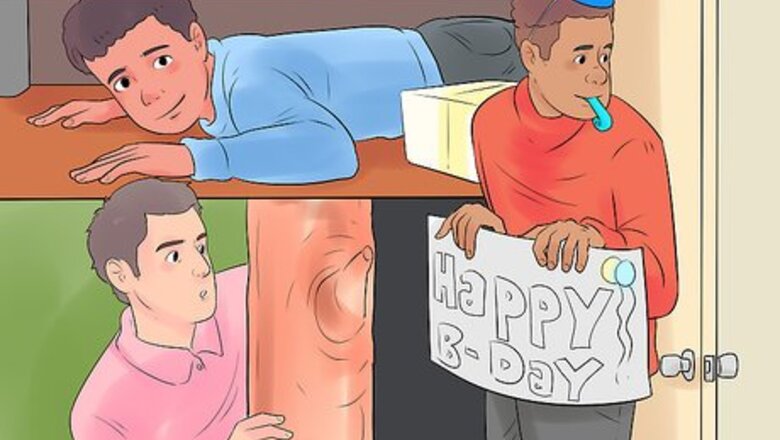
views
Selecting a Hiding Spot
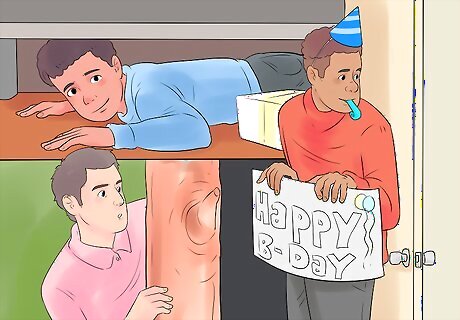
Evaluate your objective. Are you playing hide and seek? Are you trying to surprise someone? Are you trying to evade detection altogether? The reason you are trying to hide (and any rules that you may have to follow) should guide you at this point. If you are required to hide in one place the whole time, you'll want a spot with maximum cover that whoever is looking for you won't think of. If you are trying to surprise someone you don't necessarily need to be well hidden. You just want to be hidden in a place where they can't see you until they are close and you leap out and surprise them. If you are trying to evade detection altogether and are allowed to move, you'll want to take advantage of sight lines and mobility. Maximum cover is less important.
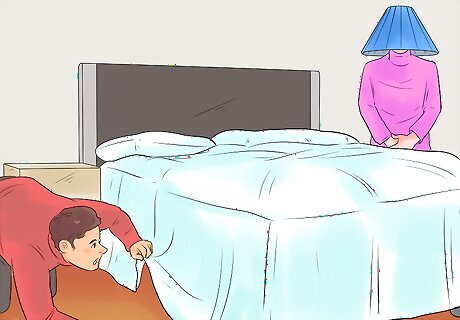
Think like the person you are hiding from. Evaluate the area in which you will be hiding from the perspective of the person you are hiding from. If they are actively looking for you, where will they think you are hiding? What will their sight lines and priorities be? For instance, if playing hide and seek, your "seeker" is going to be actively thinking of hiding places as well. For this reason, try to avoid common hiding places like closets and below beds. If trying to surprise someone you'll want to predict where they are going and position yourself in a blind spot that they'll have on the way to their objective. If trying to move and evade detection think of the sight lines that the other person will have. Ideally you will move in and out of these sight lines as their gaze shifts.
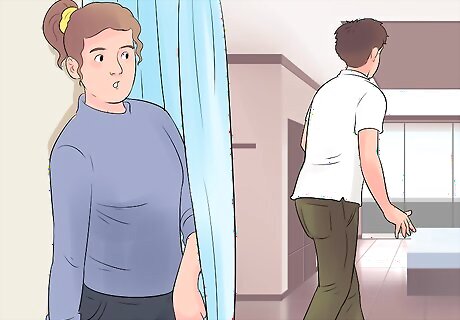
Find a spot fast if you must. Ideally, you'll have time to consider different hiding spots and find the best one. But if the person looking for you is right on your tail or if you are playing hide-and-go-seek and the Seeker is nearing the end of their count, you might not have the luxury of time. If so, you may have to rush. Even if you are in a rush, don't pick the most obvious spot. If it is really obvious, the person looking for you is sure to find it.

Find your hiding spots. If you have plenty of time, you'll want to start picking hiding spots after evaluating the territory from both your perspective and the perspective of the person looking for you. Remember the guidelines. Well concealed, non-obvious spots are best for static hiding. Surprising someone is all about taking advantage of blind spots to seize the initiative. Evading detection involves evaluating sight lines and cover, with an emphasis on mobility. Are there such things as doors, furniture (such as a sofa) or soft furnishings to hide behind? Are there tables, chairs, shelves that you can crawl under? Are there outdoor items to hide behind, such as the dog's kennel, a tree or a fence? Are there things you can hide on top of? For instance, the top of a toilet cover in a bathroom stall or the space between the top of a cabinet and the ceiling. Are there optical illusions you can make use of? For example, hiding behind hanging coats with your feet in snow boots at the base of the coats, making it seem that these are just stored objects.
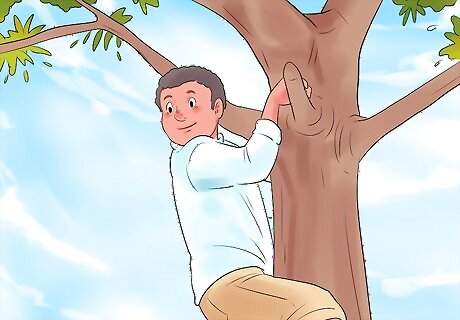
Consider hiding up high. Often, the best spots are up high. Looking up and down is the least natural eye movement for the person searching for you, and if you are directly above them it may be a very long time before they see you. Make sure that your spot won’t fall into their line of sight when they are looking for you.
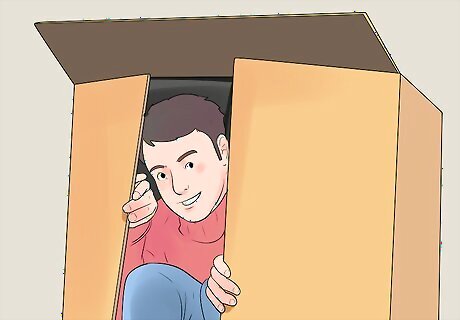
Consider hiding inside something. Boxes and laundry baskets make excellent hiding spots, as long as you won't be trying to move or change hiding spots. They are especially good if they aren't big enough to be obvious spots.
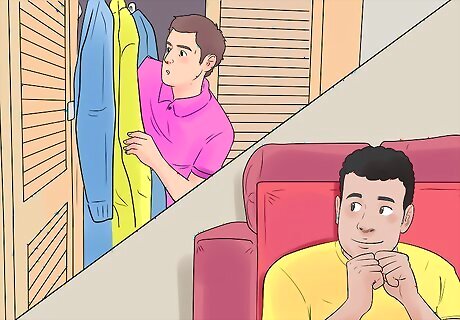
Rate the hiding spots. Which of the hiding spots suit your objectives best? If someone is looking for you they are bound to check the obvious places first, such as behind furniture or in closets. If you are trying to evade detection you may want to consider how easy it is to relocate from one hiding spot to another as the other person moves. Remember your objectives and priorities: If you can't move, maximum cover and originality. If trying to surprise someone, blind spots and the ability to seize initiative for the surprise. If trying to evade detection, minimal exposure to common sight lines and maximum mobility.
Hiding
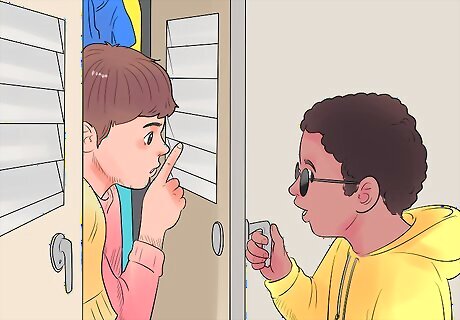
Move towards your hiding spot. Be careful not to make noise or do anything that might give away where you are going, particularly if you are playing a game. If other players are hiding as well, you may wish to make sure that they don't see where you are going. Be careful with hinges, as they can squeak. You can try to hold the squeaky hinge while opening or closing the door.

Don't disturb the environment. You'll want to make sure that you don't leave any clues that the area where you are going to hide has been disturbed. Everything should be in the place it was before you hid in that location. You can also disturb the environment as a decoy. For instance, leave a disturbance on the other side of the room so that you can hide next to the door and exit the room when the decoy is investigated.
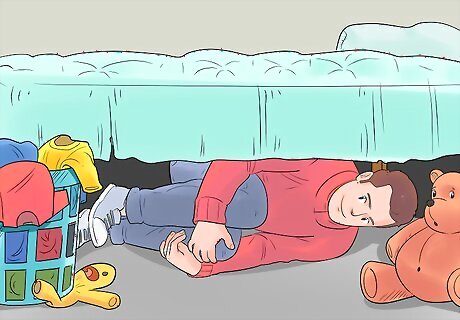
Enter your hiding spot. Now that you've been careful not to make noise or leave traces, enter your hiding spot. You may want to position yourself in a non-conventional way in order to present yourself in a different shape than normal. The human eye and brain are very sensitive to shapes, and breaking up your expected "shape" is useful to evade detection. For instance, curl into a fetal position when hiding under a bed next to discarded laundry.
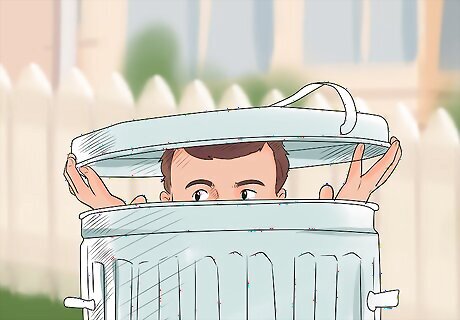
Maximize your cover. Whenever it is possible, you can try to add to your cover as long as it doesn't break the rule regarding disturbing your environment. You can also use accessories to further break up your shape
Staying Well Hidden
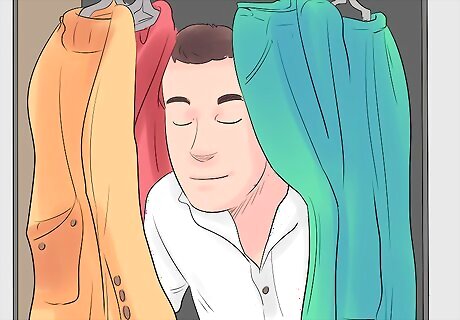
Stay calm. If you are nervous your heart rate will spike, and breathing heavily could give away your location. Moreover, you are more likely to lose your cool and do something dumb if you don't stay calm and panic instead. Stay calm and collected.
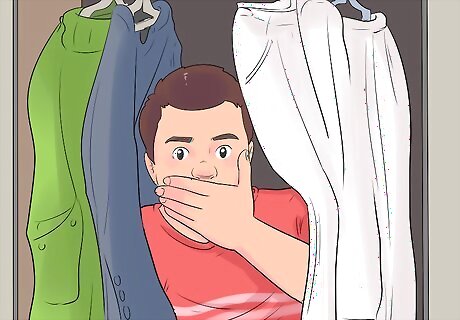
Stay quiet. Try your best not to sneeze or cough, but if you must, try to do so into your sleeve or a piece of clothing to muffle the sound. Don't fidget or shift your weight if it can be helped. Yes. This means putting your cell phone on silent too.
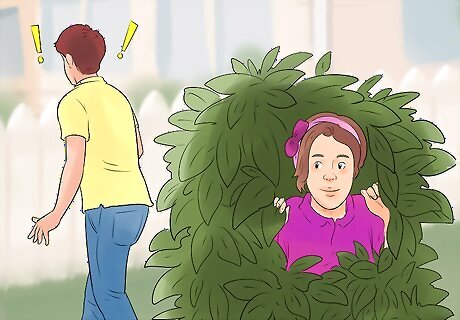
Don't give yourself away. If playing hide and seek, don't give yourself up just because you think the other person has found you. Sometimes, you may think they've seen you but they actually haven't. This is especially true if you are camouflaged or have broken up your shape with strange positioning or additional cover.
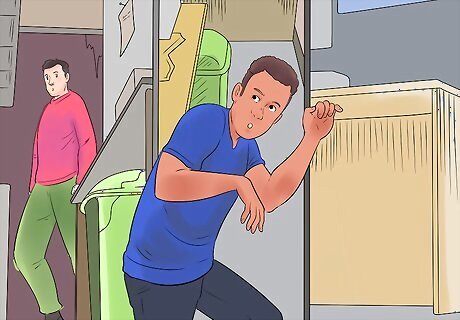
Stick with the plan. If you were trying to avoid detection, moving to a place the other person has already checked is a great idea, as is leaving the room when your exit is out of their line of sight. If trying to surprise someone, make sure that you take the initiative right before they would have seen you.

















Comments
0 comment